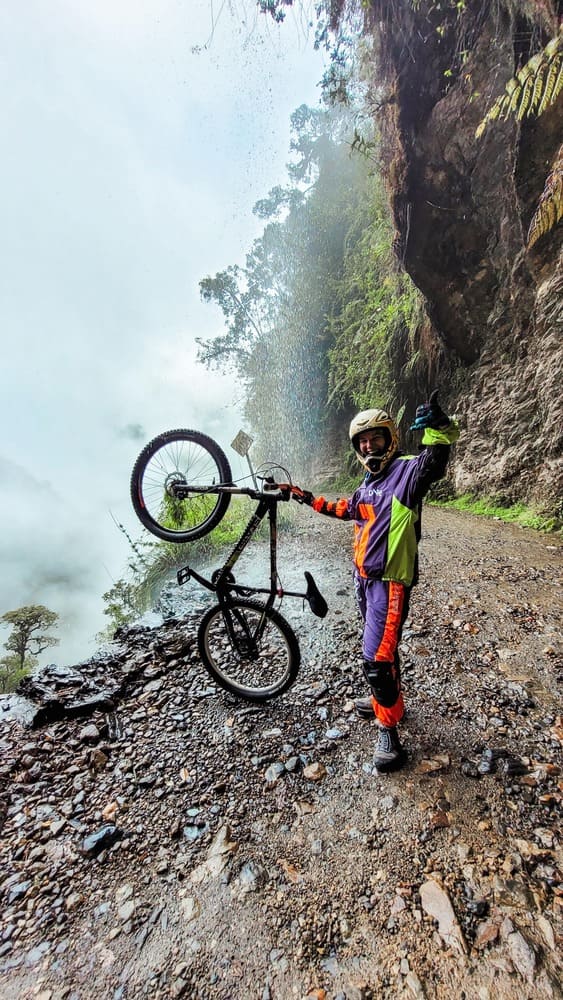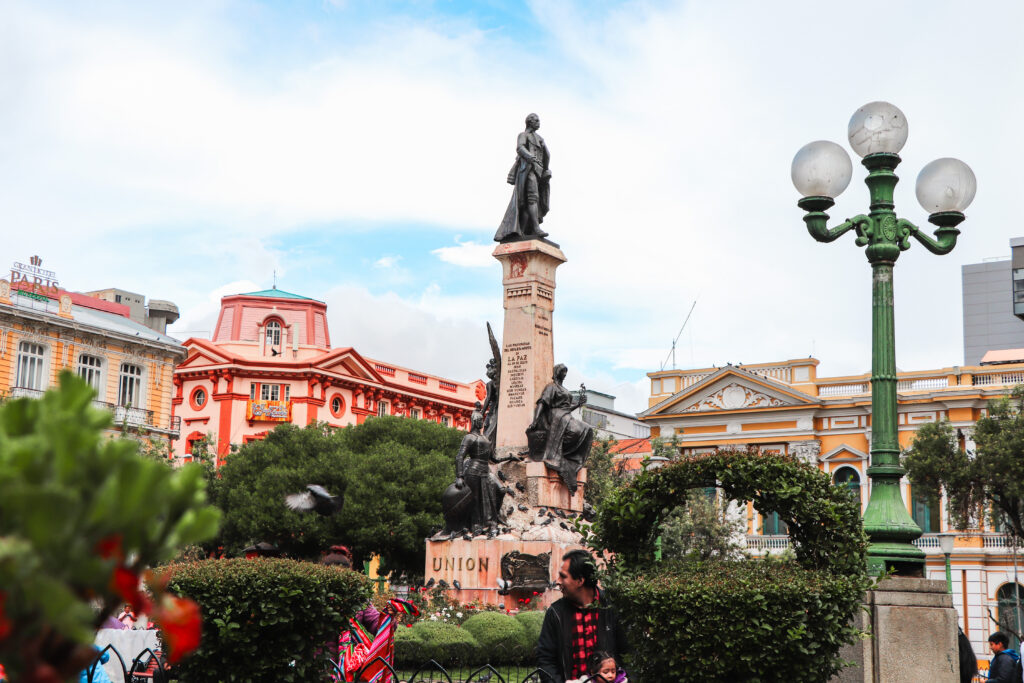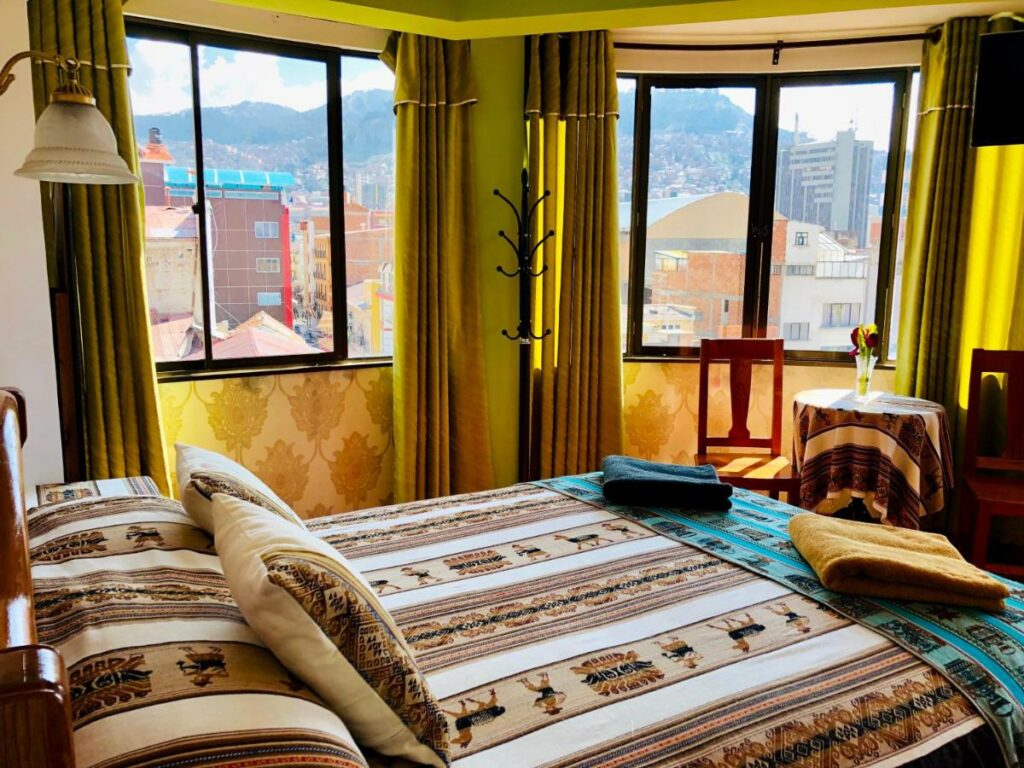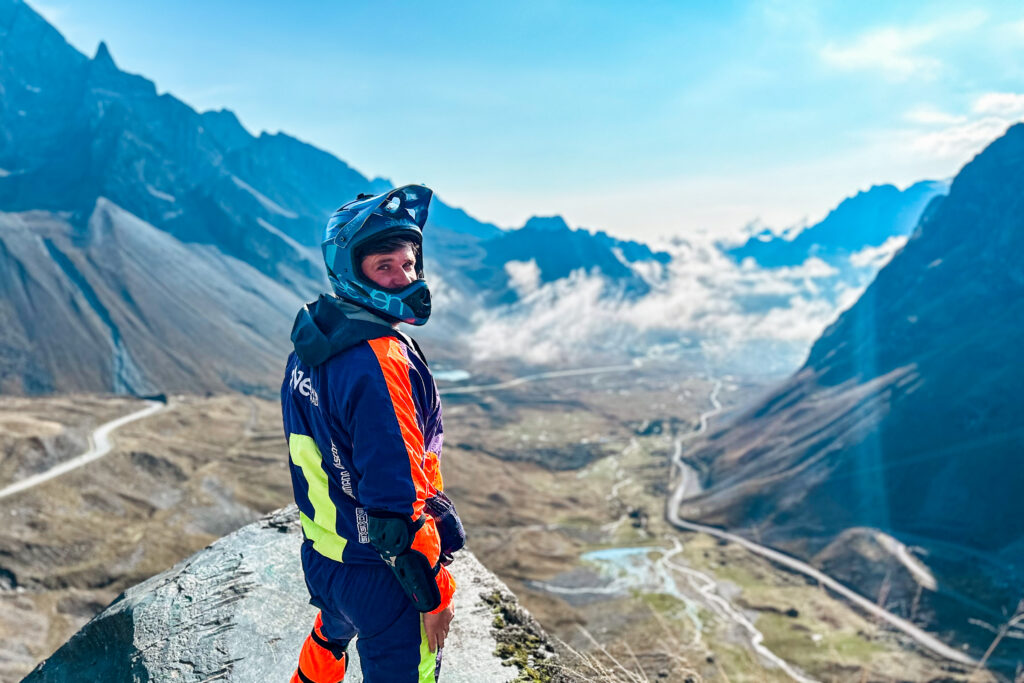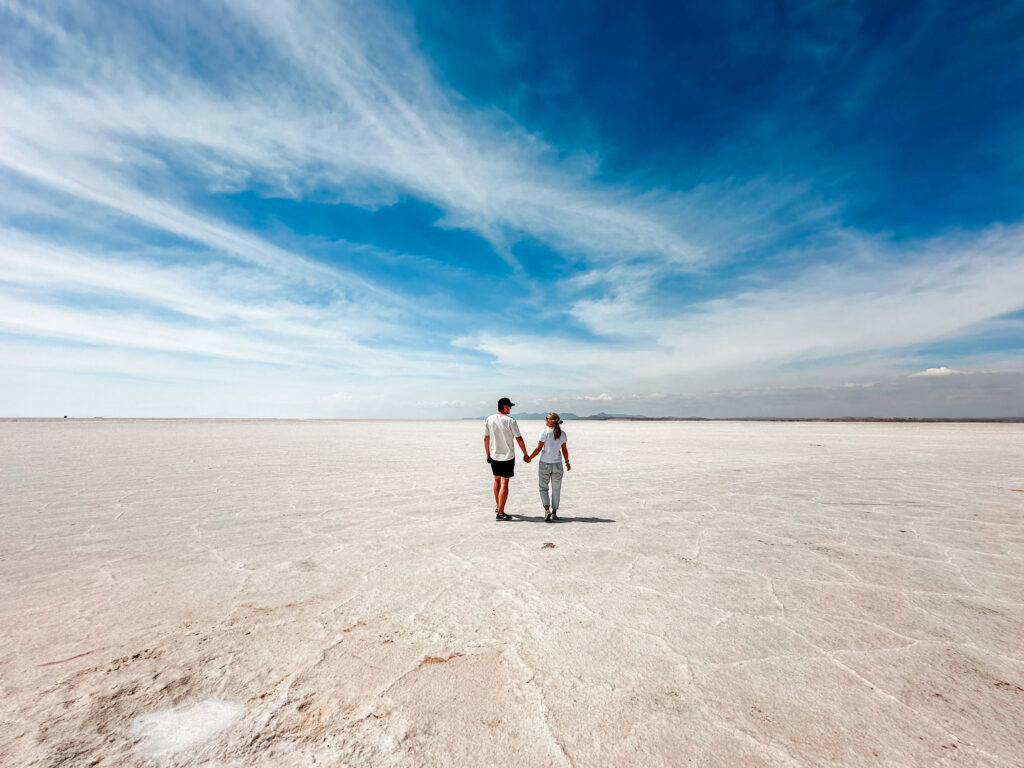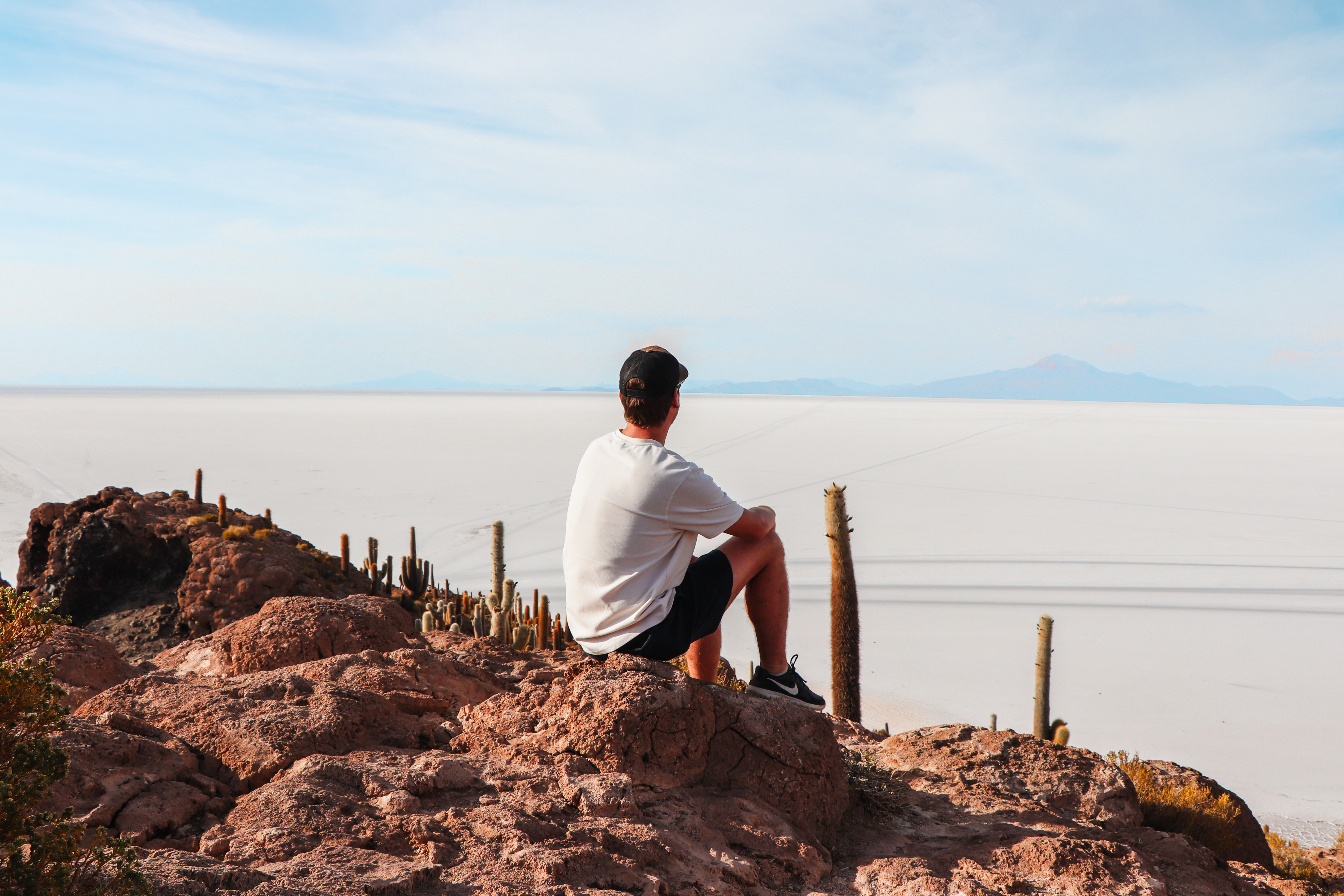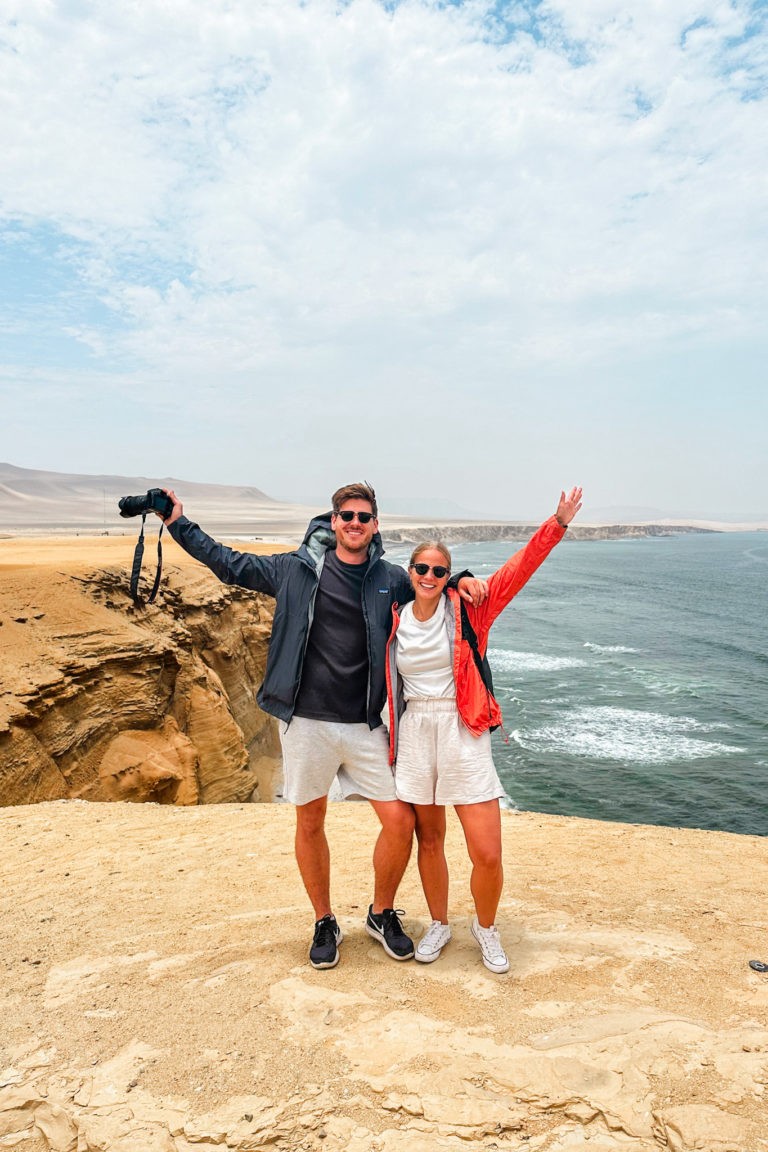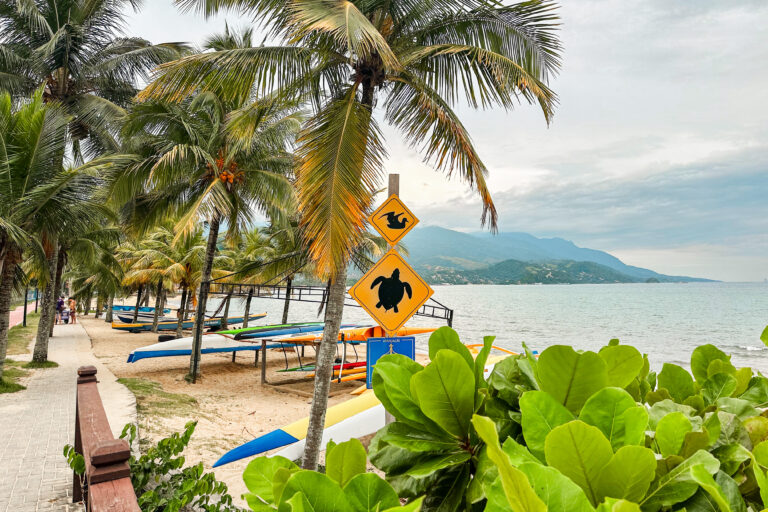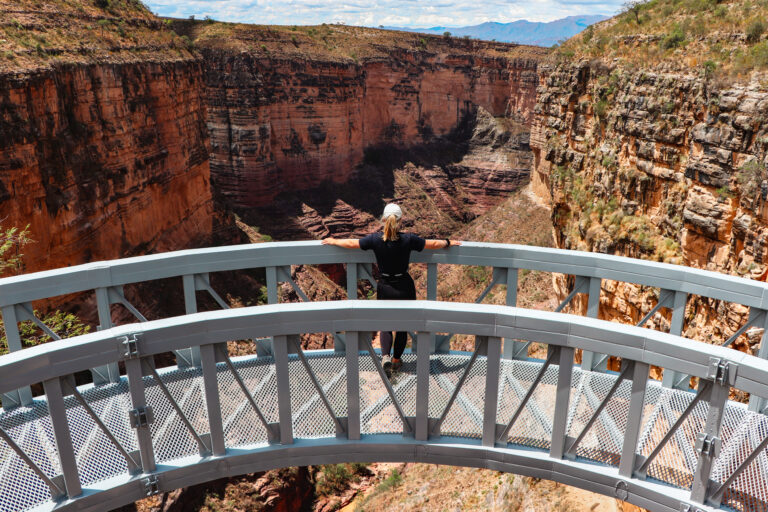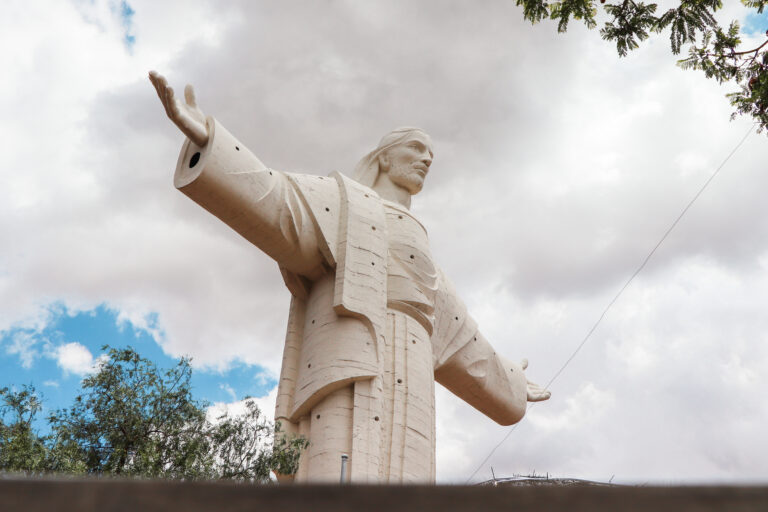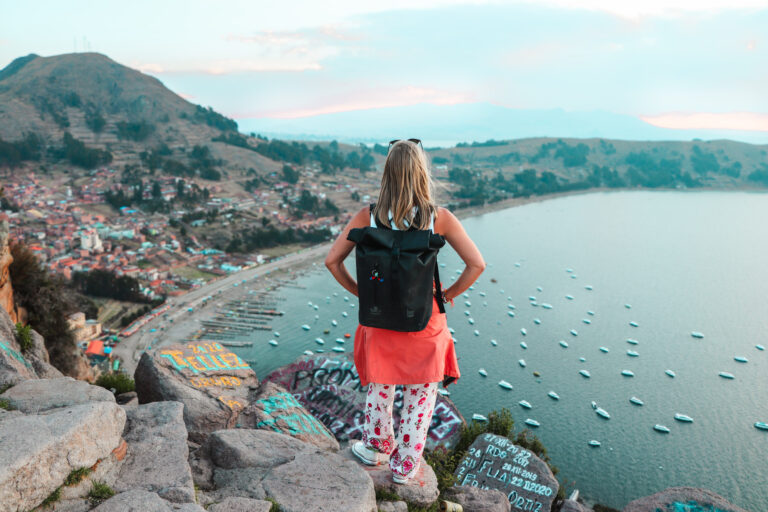Challenging the most dangerous road in the world is going to be a ride you will never forget. The Death Road, officially known as the North Yungas Road, is a steep mountain pass that connects Bolivia’s de-facto capital La Paz with the Yungas Region through rugged terrain.
We survived mountain biking the Death Road on a 64 km (40 miles) long track, and it was the ride of our lifetime. Let us tell you why we think that you shouldn’t miss out on this thrilling adventure and equip you with everything you need to know before jumping on the next plane to beautiful Bolivia.
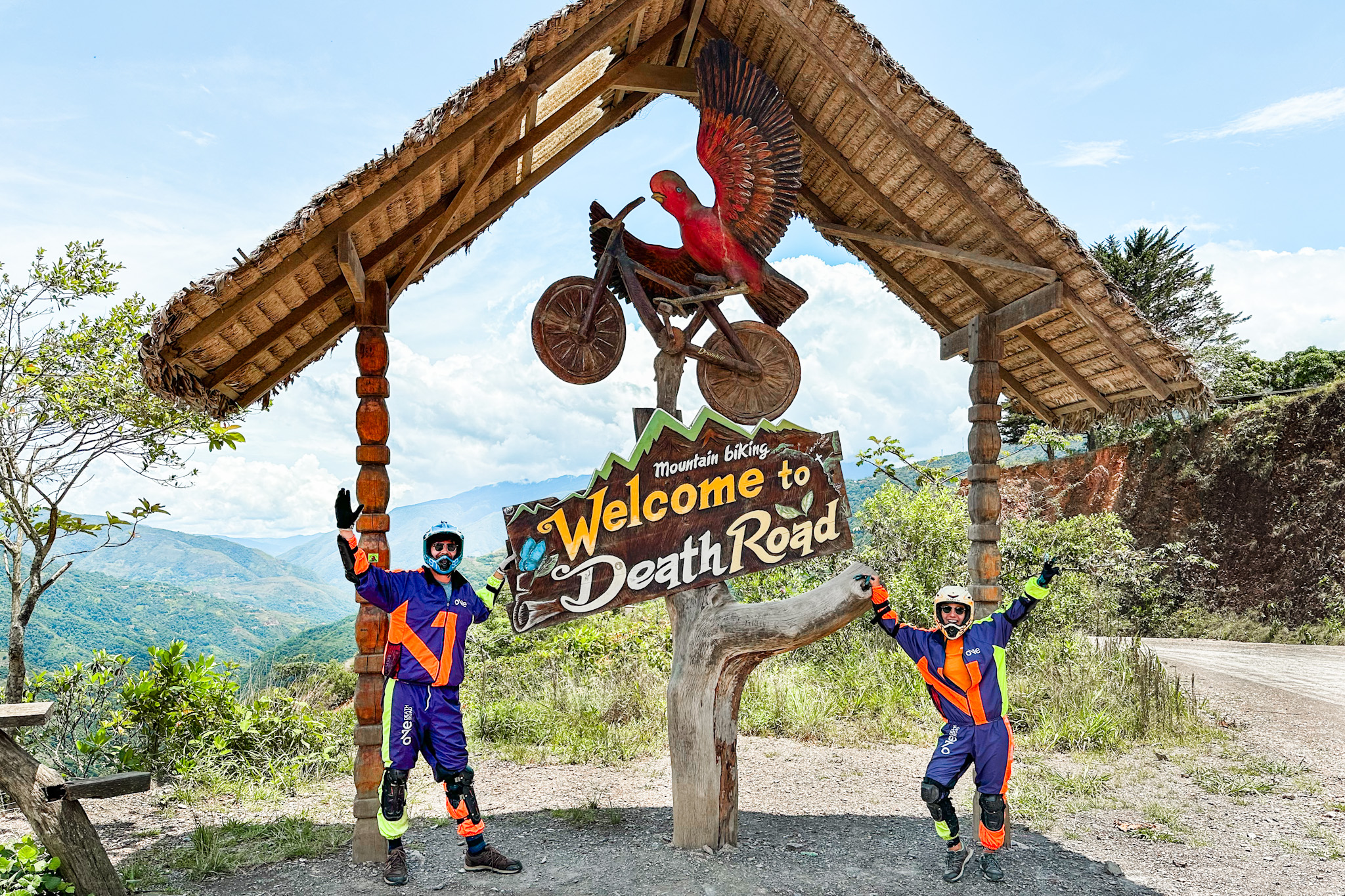
Why is the Death Road called Death Road?
Well, we could imagine better names that would make a road famous, but before the 1990s, when the road was heavily frequented, it surely was the most suitable name. Because, how else would you call a road that used to claim between 200 to 300 souls every year?
Bolivia’s Death Road is a road full of tragedies. Its construction started in the 1930s, when the Bolivian government forced Paraguayan prisoners to build the North Yungas Road, connecting the mountain region with La Paz. Since that gruesome day, it is estimated that more than 16.000 people have lost their lives on the road, with its blackest day in 1983, when a fully packed bus plunged off a cliff.
Today things look brighter again. Since the opening of a new, safer road, accidents rarely occur anymore. The road is also officially closed to all motorized traffic now, except for ongoing roadwork, Death Road tour cars, and locals living next to the road.
The Death Road today is a popular destination for everyone who looks for a thrilling and unforgettable mountain bike ride from the beautiful heights of Bolivia into the lush mountain valleys of the La Paz region. It is a new beginning for the Death Road, as people safely enjoy the thrill of mountain biking this legendary road, that turns its bad legacy into something new and enjoyable.
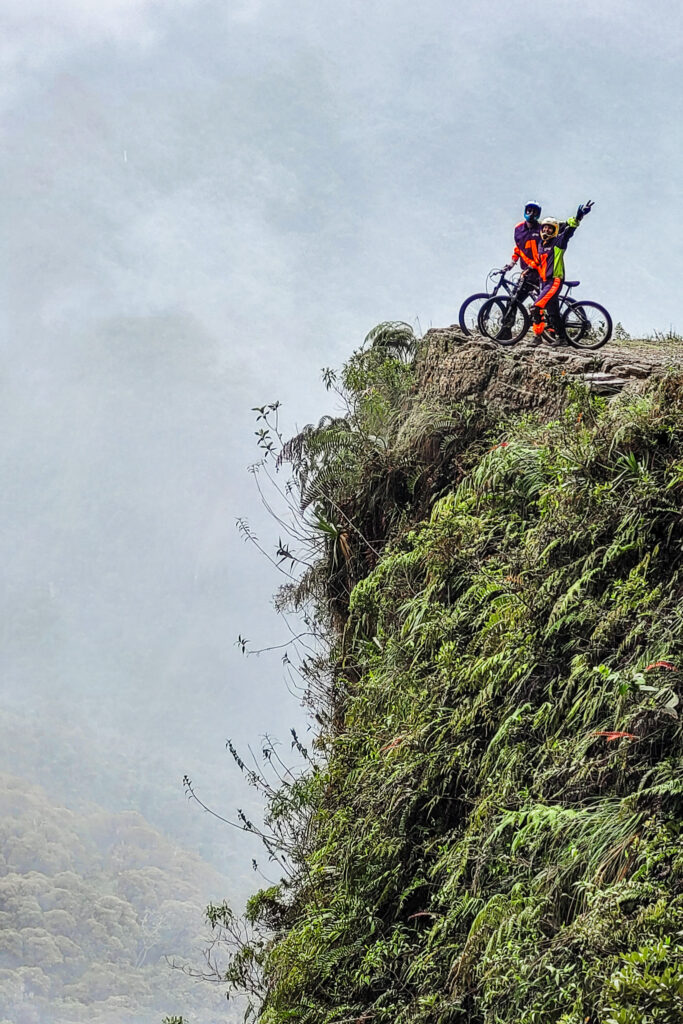
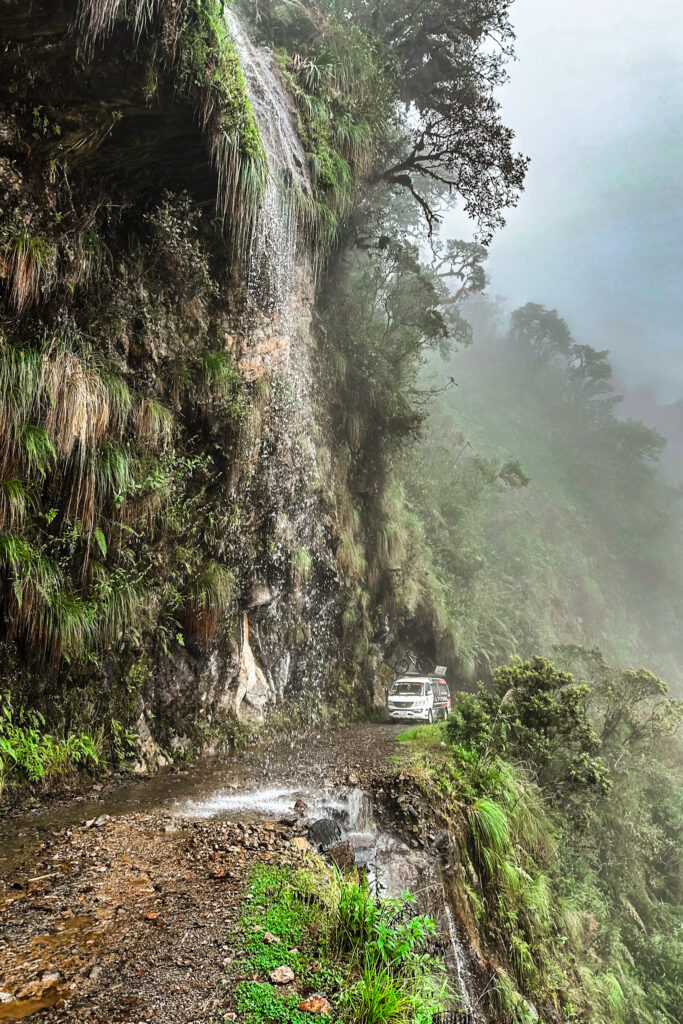
What to expect from riding the Death Road?
For us, biking down the Death Road was a once-in-a-lifetime experience. Once you overcome the fear of the Death Road being called Death Road, you’ll get rewarded with stunning views, an exciting and thrilling adventure, fun stories and guides and a day you’ll most likely remember for the rest of your life.
Expect mountain biking the Death Road to be a real challenge. Even though you only go downhill, it’s still 64 km (40 miles) and an altitude of 2,400 meters (7,874 feet) to overcome. You’ll make plenty of stops along the way to rest, take pictures, and learn more about the history of this legendary road.
We’d say the difficulty level of the Death Road is rather easy to moderate. Even with little to no mountain bike experience, like we had, you can complete the track.

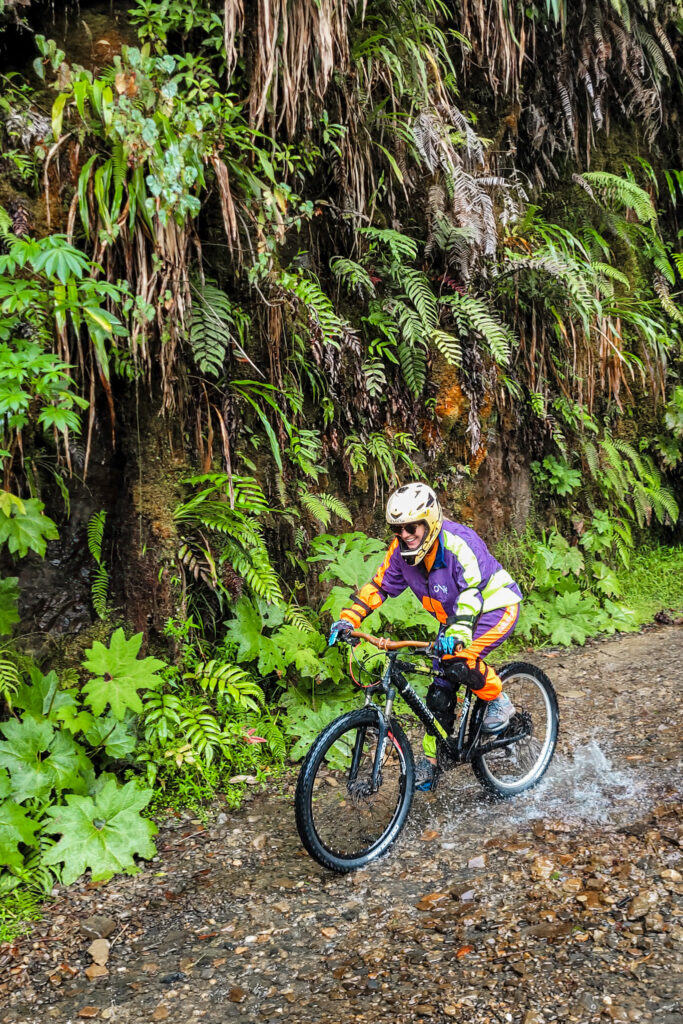
Is it safe to cycle the Death Road?
Before we talk about our experience biking down the Death Road, let’s get the elephant out of the room first: Is cycling the Death Road actually safe?
Well, we think it is. And not only because we survived our adventurous ride. Even though the Death Road once was the most dangerous in the world, it isn’t anymore. The construction of a new, safer road in the 1990s has diverted most of the traffic. Today, only mountain bikers are allowed to access the road. Also, we got some well-maintained bikes, an experienced guide, and a lot of protective gear.
However, weather conditions haven’t changed and remain unpredictable with a high likeliness of fog and rain, especially on the upper parts of the Death Road. Also, landslides regularly happen during the rainy season and there are no guardrails to prevent falling down the steep drops.
As with all adventure activities, there’s no such activity that is completely safe. But there are factors such as the bike’s condition, a guide’s experience, or the right time that you can influence by choosing a good and professional tour company (more on that later). And in fact, most accidents that happen on the Death Road today are abrasions and fractures. So, it’s common sense to stay alert, be cautious, and don’t overestimate your skills. Your guide will tell you when to exercise caution and drive slowly (more on that in the next section).
Ultimately it is your judgement and risk-awareness that makes up the decision to cycle the Death Road or rather skip on it.

Our Death Road Experience
Two biking Pros embark on a crazy adventure
We had already explored most of the best things to do in La Paz And were in a quite adventurous mood when looking for activities to fill our remaining couple of days left in Bolivia‘s capital. How could it be else, after seeing all of the crazy things in La Paz: The Witches market, the Cholita Wrestling, and the city’s strangely managed prison? And there was one thing left to do: Mountain biking the Death Road.
Relevant Reading
We didn’t know much about it, but we’ve heard a lot from other travelers that this is one of the best things to do when in Bolivia.
So, after a little research, we decided to go for it. We visited the tour company the same evening to check out their bikes and signed up for the Death Road tour the next day. Because why not… we have never really mountain biked, but what could go wrong?
The early bird catches the worm
Already at 6:30 a.m. the next morning we were picked up at our accommodation and drove right into the Cordillera Real mountain range. We reached the peak of the La Paz summit two hours later at around 8:30 a.m. where we would have a small breakfast and gear up to start our journey.
Views from the trailhead at around 3,600 meters (11,811 feet) were simply stunning. We got some great shots of those incredible mountains of the Cordillera Real de los Andes and figured out that we were really lucky. Our guide told us that, more often than not, you can be happy to see more than 20 meters into the distance.
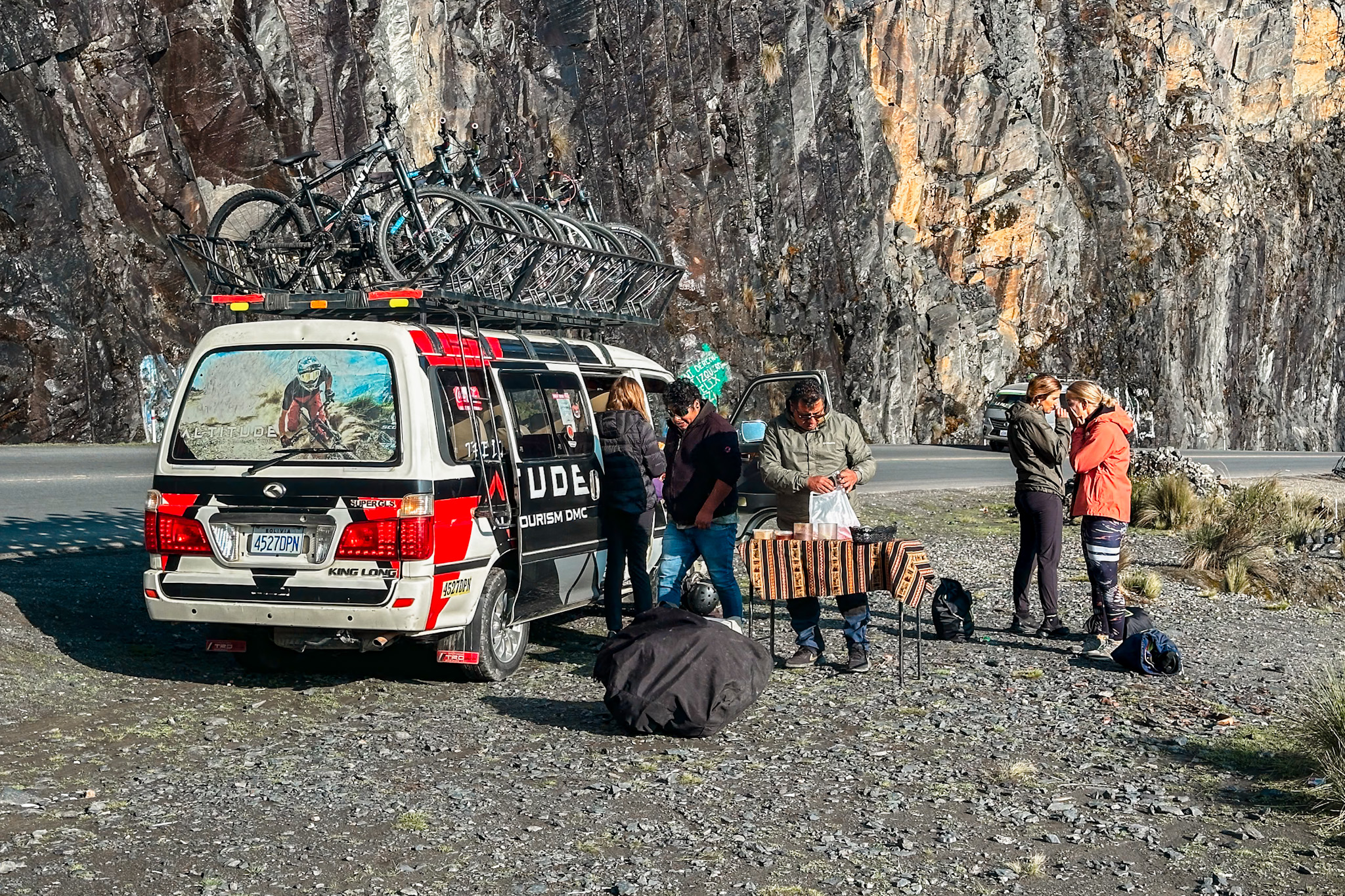
We put our biking skills to the test
For the next 60 minutes, we went downhill on a very easy tarred road. We were sure that this must be the new road that has been built to divert most of the traffic of the Death Road. It was our ‘test drive’ to prove to our guide that we can actually ride a bike (just kidding) and to check out our gear.
Even though this was considered the easiest part, we already lost more than 900 meters (2,953 feet) in altitude when we reached the famous Death Road at 2,700 meters (8,858 feet).

Easy, give us more!
Now the serious fun began. The road conditions changed from a new even concrete road with guardrails to a tiny gravel road with steep drops. The sunshine we enjoyed so much earlier was gone, and we were now navigating our way over loose stones and through dense fog.
It was impressive to see, but hard to believe that once a lot of cars were driving on this road. While the width of the Death Road was ideal for riding a bike (you could leave enough safe space to your left), there were sections that we really needed to drive very slowly and be aware of not sliding over a rock and down the drop.
At all times we felt very safe, as our guide was instructing us about every upcoming section. Moreover our ‚safety car‘ followed the group at all times. Poor driver, but that way nobody could get lost.
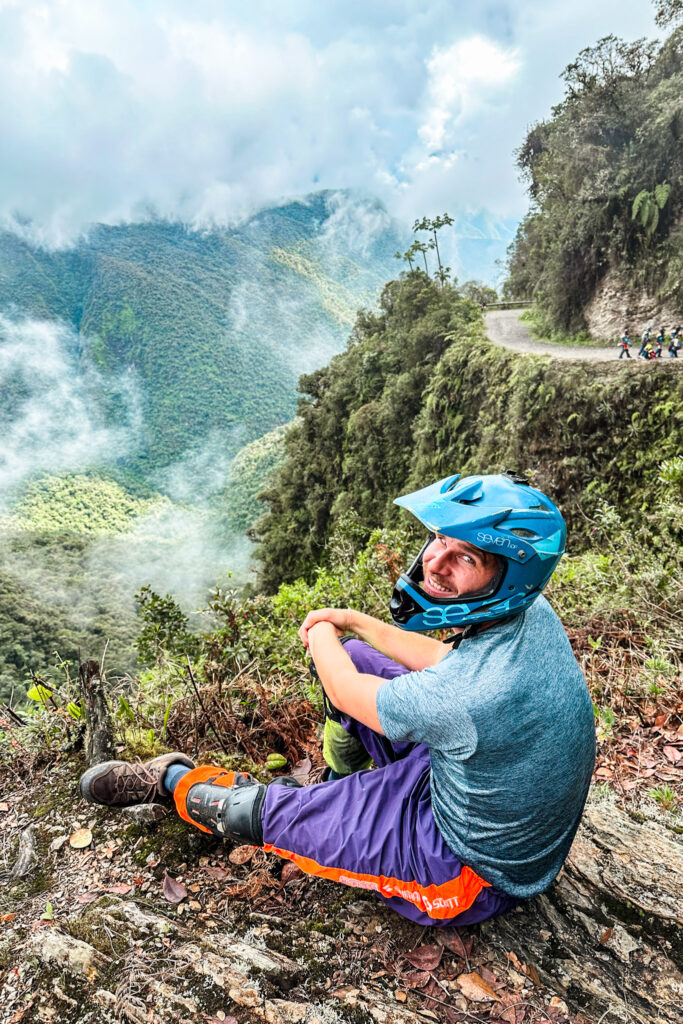
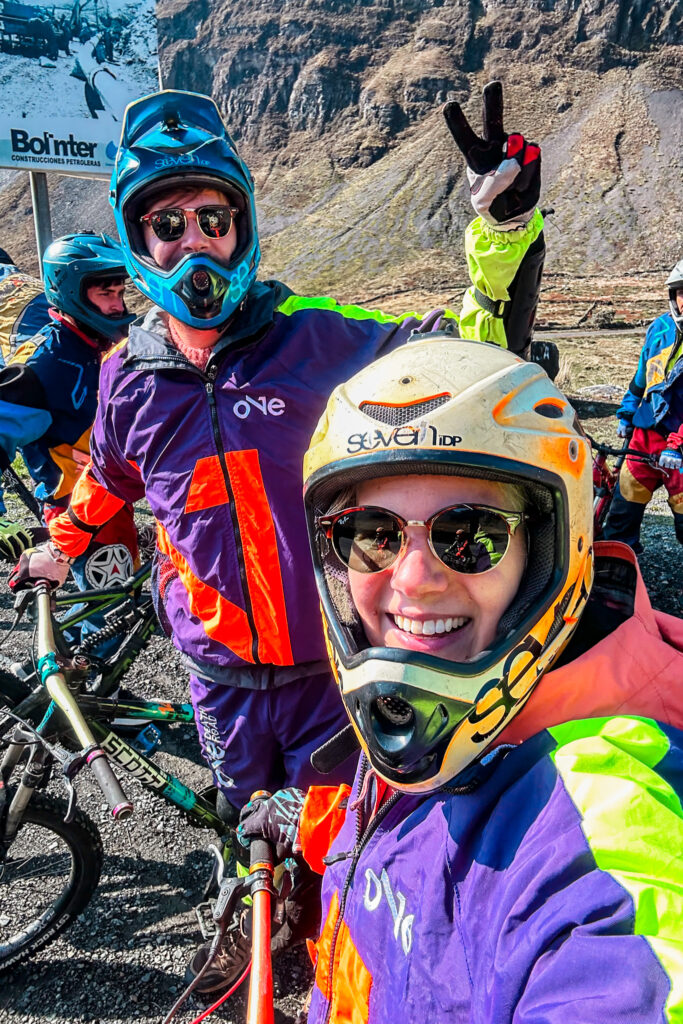
An once-in-a-lifetime experience
We made several stops along the way to admire the great views, take some cool shots and just chat about the history of the famous Death Road. We had never thought that we would have so much fun.
More than halfway through the tour, we got some snacks and took a longer break at a location where you could also zip line, in case the ride wasn’t giving you too much adrenaline already.
Once we made it safely to the end of the Death Road, approximately 64 km (40 miles) and another 4 hours later, we finished the tour sitting in the sun, enjoying the warm climate, and cheered on now being Death Road Survivors with two ice-cold beers.

What does it cost to bike the Death Road?
Tour Cost
Expect to pay between 400 BOB (≈ 60 USD) to 600 BOB (≈ 90 USD) for a guided Death Road Tour, plus an additional 100 BOB (≈ 15 USD) entrance fee.
How much you will pay for the Death Road tour mostly depends on the type of bike you are going to rent. Most tour operators offer you the choice between a classical mountain bike with one suspension in the front (“hardtails”), and full-suspension bikes (front and rear), as well as newer and older models.
After we had examined the available bikes, we chose to go with a classical bike that wasn’t of the newest model. Though, we made sure that it was still maintained very well. That way we could save some bucks, without giving up on any safety. If we wouldn’t have seen the bikes before, we would have made sure to go with the best available option.
Recommended Tour
Tour Inclusions and Exclusions
All Death Road Tours should include a guide, good equipment (helmet, gloves, jumpsuit, shin, and arm guards) and well-maintained mountain bikes. Most of them provide you a very basic breakfast (bread-and-jam-style), some snacks along the way, and a full lunch at the end. Our tour also included a visit to a nearby hotel, where we could have a swim in the pool and relax in the sun which came in very handy.
Entrance fees and tips were not included in the tour. But we happily tipped our guide and driver, as he not only met our primary goal of surviving, but was also very professional, approachable, helpful and informative throughout the whole experience.

How to visit the Death Road?
The best way to experience the Death Road is by booking a tour from La Paz. There are a handful of tour operators that offer you a daytrip to the Death Road. It’s a long drive from La Paz, and we don’t know if it is actually possible to enter the Death Road without a tour. But we know that this is definitely something you do NOT want to do.
In case you are planning your trip to La Paz, consider staying there at least three days to explore all of the (other) crazy things that you can do in the city.
Relevant Reading
If you are looking for some good accommodations that we can recommend, have a look into our picks:
What to pack for the Death Road?
If we think back to our Death Road experience, the thing we needed the most were sunglasses. Not because of the sun, but because of nothing getting in your eyes while rushing downhill.
We’ve stuck our heads together to come up with a packing list for your ultimate Death Road adventure. You don‘t need much. But for a more comfortable ride, you can leave your bagin the safety car.
What is the best time to bike the Death Road?
The best time to bike the Death Road (Camino de Yungas) is during the dry winter season, especially from June to August. The drier the better the road conditions are, as the road can get quite treacherous when wet. It’s already a challenge to bike the Death Road, so we’d recommend to not make it more difficult.
Also, weather conditions can change quickly, independent of the time of the year. You start your ride at an altitude of 3,600 meters (11,811 feet), but 4 hours and 64 km (40 miles) later you end it at only 1,200 meters (3,937 feet). So, while you lose more than 2,400 meters (7,874 feet) in elevation, the cloudy and wet weather in the summit can turn into a beautiful sunny day (or the other way round!).
We wouldn’t recommend cycling down the Death Road during the wet season. Rainfalls during this season are way more probable, making it unpredictable to plan. It’s also riskier, as landslides happen more regularly. Even though we visited the Death Road at the beginning of the wet season, we still came across a recent landslide.
Have a look to our climate diagram to find out the best time for challenging the Death Road:
Is biking the Death Road worth it?
Maybe you guessed it already from reading about our Death Road experience: Yes, challenging the Death Road was a one-of-a-lifetime experience for us. We enjoyed the adrenaline-pumping ride as much as the beautiful views from the mountain and along the track. Even as complete amateurs, we were able to survive the ride without any injuries, but with a lot of unforgettable memories.
Now that we have successfully completed the Death Road, we are happier than ever that we dared to tackle this adventure. And what turned out to be true were our guide’s words: “I’m pretty sure that riding down the Death Road will be one of your most favorite experiences in Bolivia, if not in whole South America.”
He was right. It was indeed one of the best things we did in Bolivia, right after visiting the Uyuni Salt Flats.

